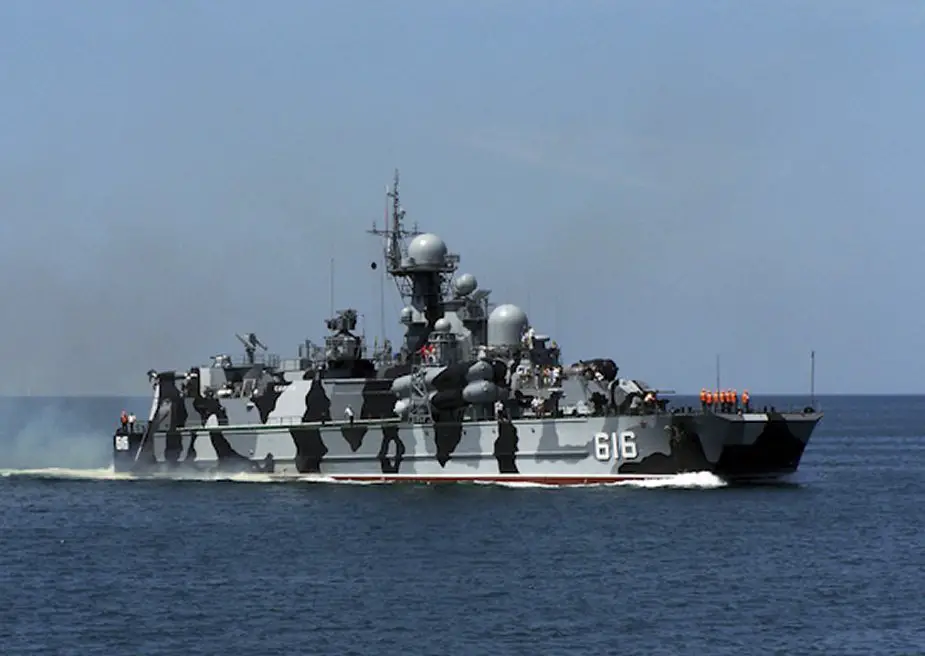Breaking news
Russian Navy missile hovercraft Samum of Black Sea Fleet conducts live fire exercise.
Combat crews of the Black Sea Fleet's Samum hovercraft missile ship (RKVP) carried out artillery fire at one of the combat training grounds in the Black Sea.
Follow Navy Recognition on Google News at this link
 Samum hovercraft/hoverborne missile ship (RKVP) (Picture source: Russian MoD)
Samum hovercraft/hoverborne missile ship (RKVP) (Picture source: Russian MoD)
As part of the combat training event, the sailors carried out preparatory and test artillery fires at sea and air targets. A ship target shield was used as a surface target, imitating a conventional enemy ship. The air targets were luminous air bombs (SAB) dropped from the aircraft of the Naval Aviation and the Air Defense of the Black Sea Fleet. Artillery crews of the Samum RKVP of the Black Sea Fleet fired at mock-ups of floating mines.
At the final stage of the firing, the sailors worked out the algorithm of actions for organizing the air defense of the ship during the passage by sea with the setting of electronic jamming.
The Bora-class hoverborne guided missile corvette of the Russian Navy, also bears the NATO class name Dergach, is one of the few types of military surface effect ship built solely for marine combat purposes, rather than troop landing or transport. Its designation in the Soviet and Russian navies is Project 1239; the first vessel produced under this designation was Sivuch, which was later renamed Bora. It is one of the largest combat sea vehicles with catamaran design.
The ship is one of many marine craft built by the Russian Federation for coastal defense, both domestically and for export. The weapons array Bora class warships carry varies depending on which of several configurations it is built to. The Bora-class was designed in 1988 mainly for coastal defense and patrol duties against surface vessels, large and small. Two were built and are currently in service, both assigned to the Russian Black Sea Fleet. A future series of hovercraft have been planned based on this model for future production.




























